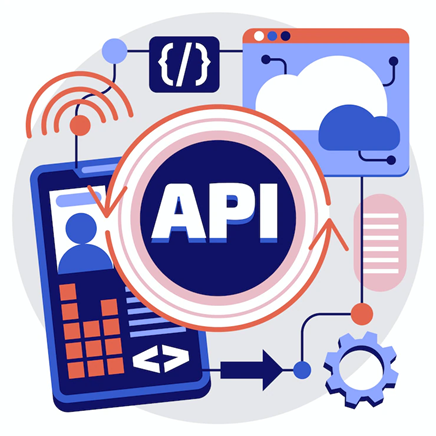A Complete Guide to Understanding API Gateways
What are API Gateways?
An API Gateway is a server that acts as an intermediary for requests from clients seeking resources from servers. A client makes an initial request to the gateway, which forwards the request to the appropriate internal server. The gateway may also perform additional tasks such as
load balancing, security enforcement, and caching.

Uses of API gateways
API Gateways are used in a microservices architecture to provide a single point of entry for clients seeking access to the various services that make up the application. The Gateway can route requests, perform transformation and aggregation, enforce security policies, and provide other functionality.
Why use API Gateways?
API Gateways offer a number of advantages over direct client-to-server communication.
Some of the key benefits include:
1. Increased flexibility – An API Gateway can provide a single point of entry for multiple microservices, making it easier to change or add services as needed.
2. Improved security – API Gateways can enforce security policies, such as rate limiting and authentication, to protect the underlying services from malicious requests.
3. better performance – API Gateways can cache common requests and responses, resulting in improved performance for clients.
4. reduced complexity – API Gateways can hide the complexity of the underlying microservices from clients, presenting a simpler interface to the application.
5. easier monitoring – API Gateways can provide a single point of entry for monitoring and logging requests and responses from the underlying microservices.
6. improved scalability – API Gateways can distribute load among multiple servers, providing better scalability for applications that receive a large number of requests.
7. reduced costs – API Gateways can reduce the costs associated with direct client-to-server communication by reducing the number of network calls and eliminating the need for each client to maintain its own connection to each server.
8. improved reliability – API Gateways can provide a degree of fault tolerance by routing requests around failed or unavailable servers.
How do API Gateways work?
API Gateways typically sit between a client and a group of servers, acting as a single point of entry for the client. The gateway receives requests from the client and forwards them to the appropriate server, often after performing tasks such as load balancing, caching, security enforcement, and transformation. The gateway may also perform additional tasks such as logging and monitoring.
Request routing:
API Gateways can route requests to the appropriate backend service based on the request path or other information in the request. For example, a gateway may route requests for /api/users to a user service, and requests for /api/orders to an order service providing better scalability for applications that receive a large number of requests. For example, if there are three servers available to handle requests, the gateway can route each request to a different server.
Load balancing:
API Gateways can distribute load among multiple servers, providing better scalability for applications that receive a large number of requests.
Caching:
API Gateways can cache common requests and responses, resulting in improved performance for clients.
Security enforcement:
API Gateways can enforce security policies, such as rate limiting and authentication, to protect the underlying services from malicious requests.
Transformation:
API Gateways can perform transformations on requests and responses, such as converting between different data formats. For example, a gateway may convert a request from JSON to XML before forwarding it to the backend service, or convert a response from XML to JSON before returning it to the client.
Monitoring and logging:
API Gateways can provide a single point of entry for monitoring and logging requests and responses from the underlying microservices. This can make it easier to debug problems and track down issues.
API gateway Issues
• API Gateways can introduce a new point of failure into an application. If the gateway goes down, the entire application may go down with it.
• API Gateways can be complex to configure and manage, especially if there are many microservices in the application.
• API Gateways can introduce latency into an application. Each request must pass through the gateway, which can add time to the overall response time.
• API Gateways can be a bottleneck for requests. If the gateway is not able to handle the load of requests, it may start dropping requests, resulting in errors for clients.
5 Golden Rules for Great Web API Design
How do I protect API gateways?
There are a few things you can do to protect API gateways:
Implement rate limiting:
One way to protect API gateways is to implement rate limiting. This will limit the number of requests that can be made to the gateway in a given period of time. This can help prevent denial-of-service attacks and protect the underlying microservices from being overwhelmed with requests.
Implement authentication:
Another way to protect API gateways is to implement authentication. This will require clients to provide credentials before they can make requests to the gateway. This can help prevent unauthorized access to the API.
Use a firewall:
You can also use a firewall to protect API gateways. This will allow you to block requests from malicious IP addresses and limit access to the gateway to trusted clients.
Monitor gateway activity:
You should also monitor the activity of your API gateway. This will help you identify potential issues and problems with the gateway. You can use a tool like Loggly to monitor gateway logs in real-time.

API Gateway can be a helpful addition. Contact API Guy today to learn more about how we can help you implement an API Gateway.


